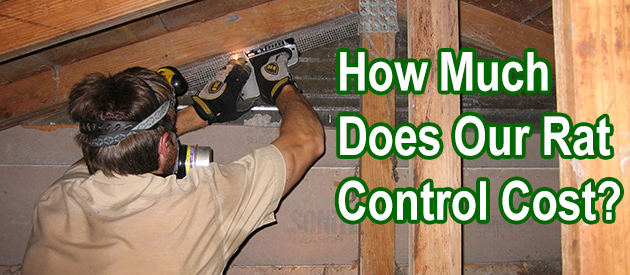Pima County, Tucson Rat Control Situation:
David, Can you please help me with some advise and maybe a referral for a local professional in Tucson AZ? I live in a mobile home and hear rats in the walls and ceiling at different time including during the night. I had a professional general contractor put very fine metal chicken wire called "hardware cloth" all around the bottom of my mobile from the edge to the ground attached to the stackered white bricks with screw drilled into them. There might be some very small gaps in different places, but no sign of rats getting in like black marks from their fur, rat droppings or urine stains any where outside. I even put screening around the the very small roof vents. I also previously had a friend come by who is in the pest control business and he looked all around the outside and just could not find where the rats are coming in at. I was using Decon for about 7 or 8 months, but now switched to a very strong blocks of rat poison from a local Do-it-Yourself Pest Control store. I always put the poison out under a small hole under the very fine metal hardware cloth in two different places and then block the hole off with a brick. I bought a 9 pound bucket for $39 and they already ate about 2 1/2 to nearly 3 pounds of it and I am still hearing them. *** Why is the strong blocks of poison not working, do they get amunity to it? Last year I even brought Rid-Ex Plus that turns your whole house wiring into a sound they do not like. It worked for a while, but not does not seem to affect them at all. It comes on for 3 minutes and then shuts of for 3 minutes (so they do not get use to the sound waves) and keeps repeating the cycle 24 hours a day 7 days a week.
How in the rats world are they still getting in my walls and ceilings voids? Can the rats be possibly tunneling or travleing through the underground the sewer pipes? *** Why is the strong poison not working? Do the rats get amunity to it after eating it for awhile? *** If there are dozens of them, would I not at least see one outside once in awhile or some signs of them? Where is there food supply? A few doors down are a few fruit trees, but would they not move closer to them? A tree right next to my place has these really small berries, could that be what they are eating? Should I move out for a while and not use any air conditioning, so the walls will get to hot for them to live in? I am at wits end and really need your advise and/or a professional to probably come out and help me get rid of these rats.
Tucson Rat Control Tip of The Week
What Are The Mating Habits Of The Black Rat And Norway Rat?
Black Rat
The ship rats have a polygamous mating framework, where a single male mates with various females. As a rule, the prevailing male is a successful breeder. These rats mate from March to November. The development or conception period goes on for 21 - 29 days, yielding 3 - 5 litters of 1 - 16 young (with a normal or average of 7) every year. Children of this species are brought into the world altricial. Their eyes open just at 15 days old, while hairs show up before the end of the nursing period. The young ones are weaned, and become independent at 3 - 4 months of age.
Norway Rat
Norway rats generally build homes in below-ground burrows or at ground level. Homes might be fixed with shredded paper, fabric, or different stringy materials. Litters of 6 to 12 young ones are brought into the world 21 to 23 days after conception. Baby rats are stripped, and their eyes are shut; however, they develop quickly. They can eat solid food at 2 1/2 to 3 weeks. They become independent at around 3 weeks to about a month and arrive at reproductive maturity at 3 months old, sometimes as early as 8 weeks. Female Norway Rats may come into heat every 4 or 5 days, and they may even mate a day after a litter is conceived. The average female rat has 4 to 6 litters per year and may effectively wean at least 20 offspring every year.


